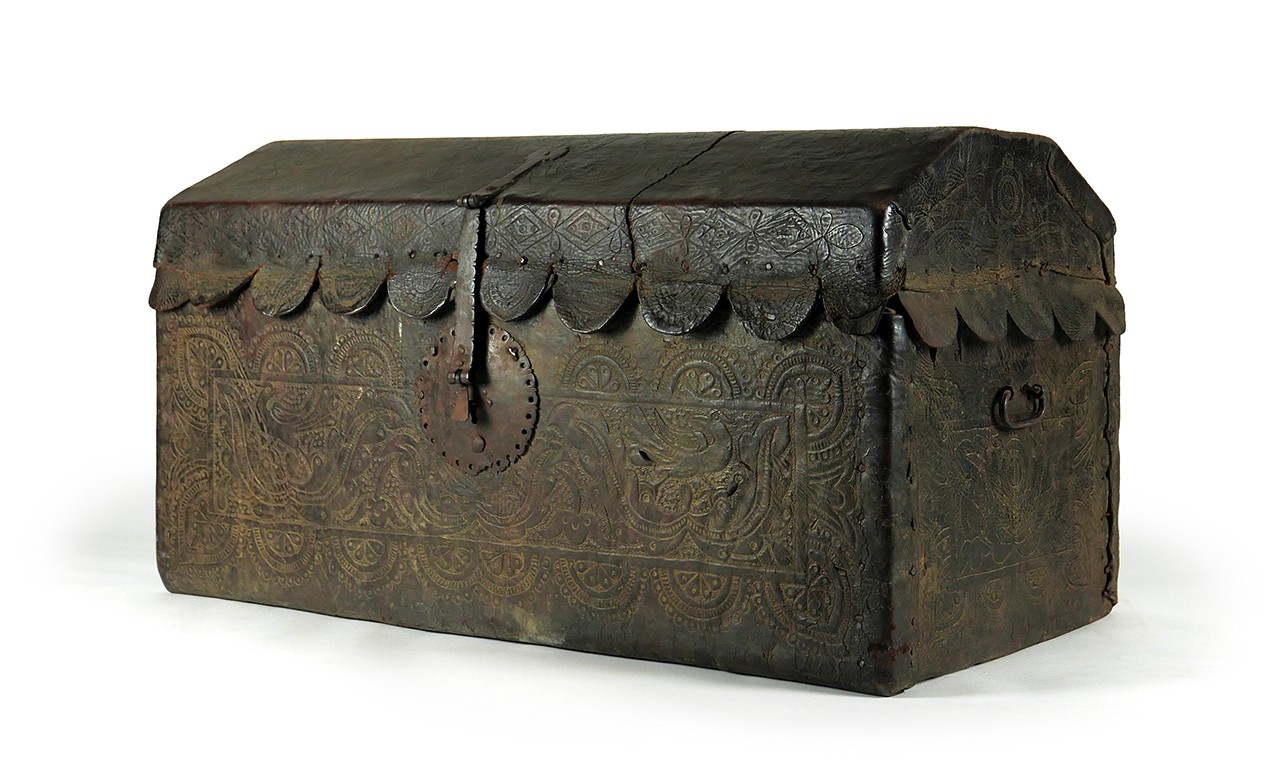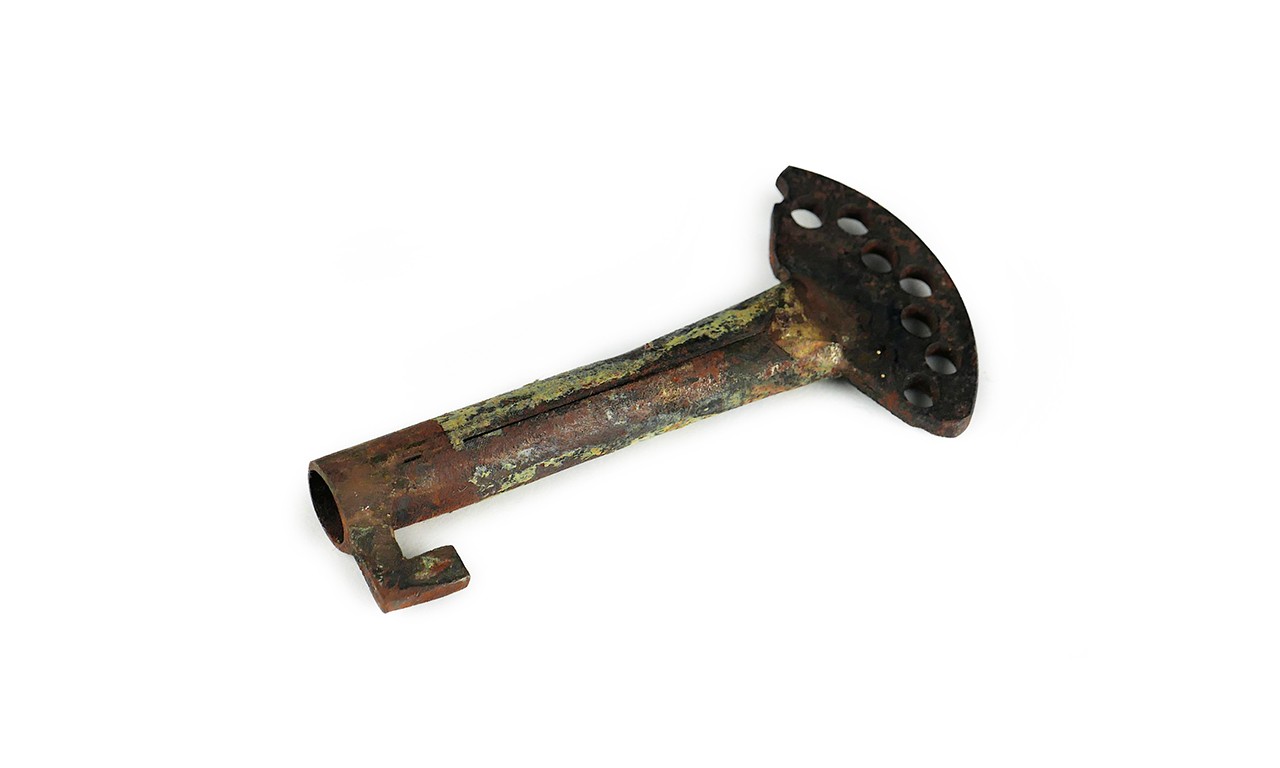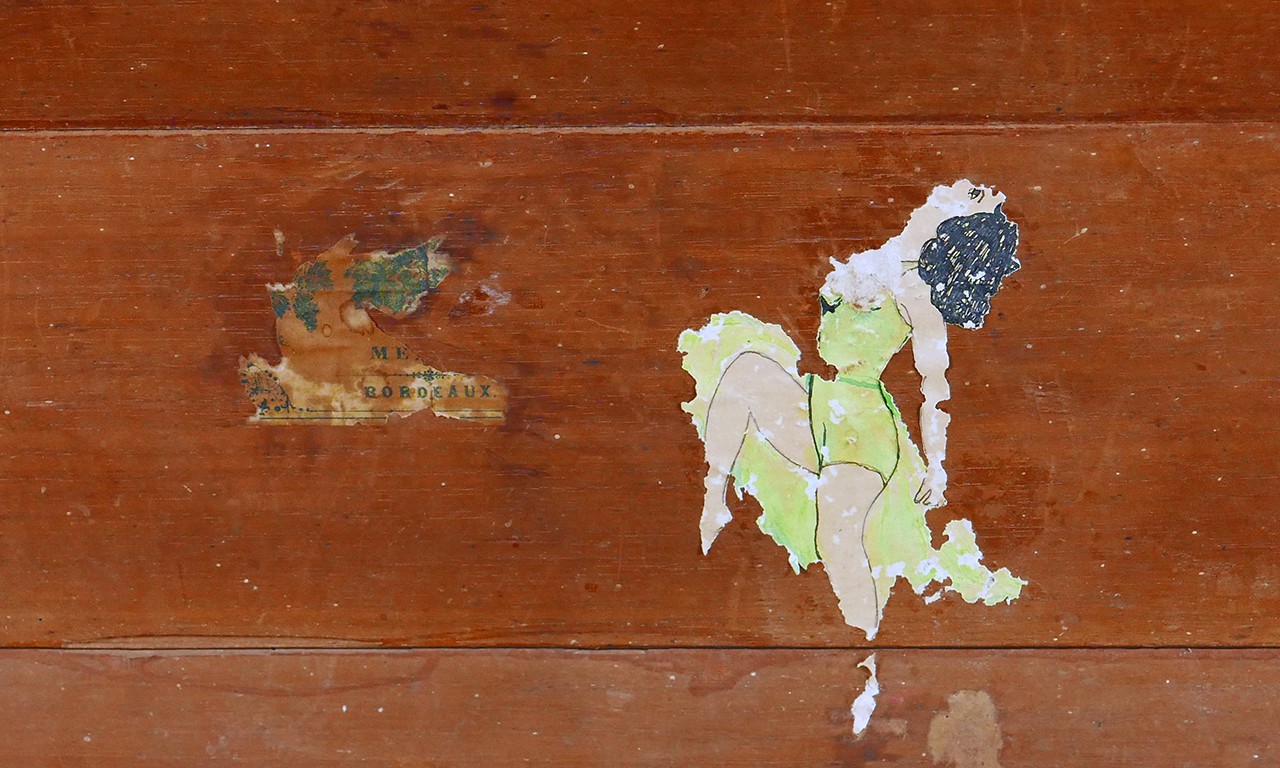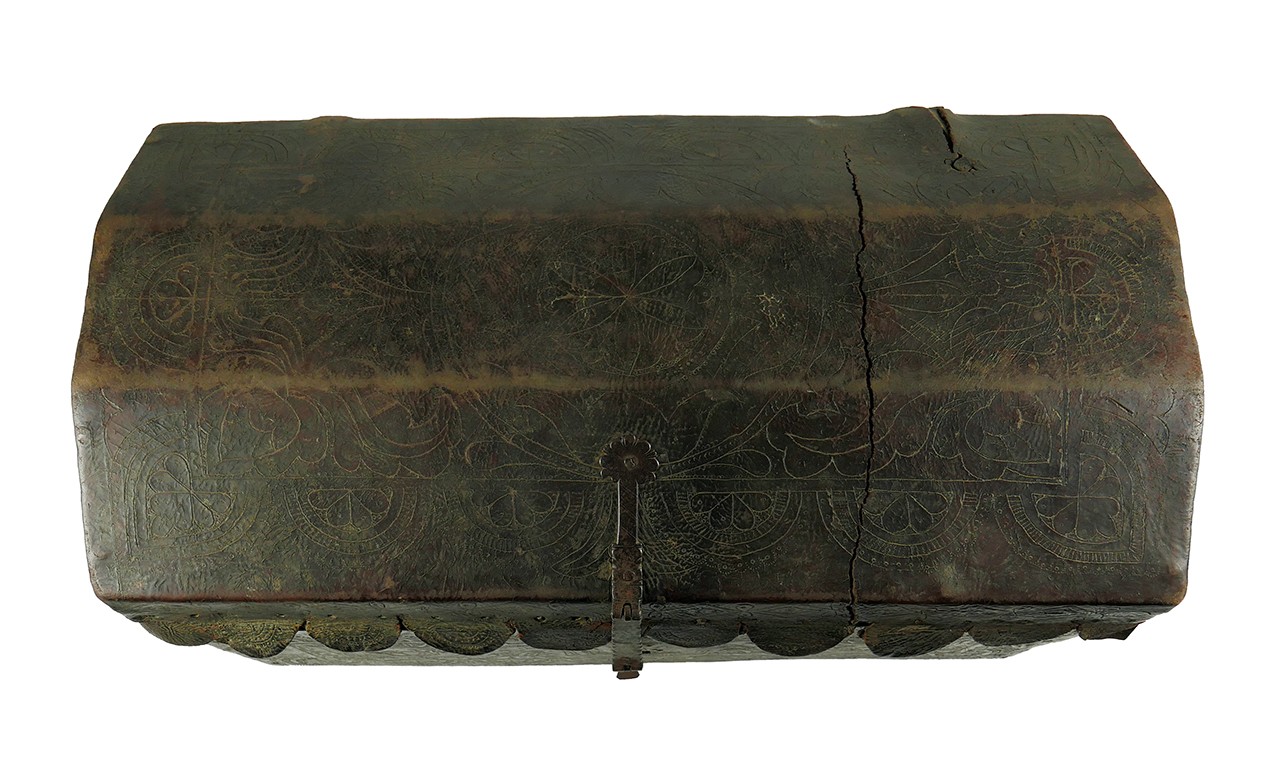 |
Chest, 17th to 18th Century
Peru
Leather, wood and iron; 20 1/2 x 36 x 19 3/4 in.
2020.1.1a
Gift of The Nesselrod Family |
Trunk Show
Luggage is probably most on the mind when you’ve been told by an airline that it’s just barely oversized and that you’ll have to check it, but its history dates as far back as human migration. Longtime visitors to the Bowers Museum will know that we have had a few such containers for porting belongings—all of which tragically predate having wheels for convenience—in our California Legacies areas. One used by Dona Maria Jesus Yorba de Botiller is still on display in Missions and Ranchos. As with many of the ornate containers used in Alta California in the 19th Century, the majority of these were made in places like China and imported to the Americas. However, earlier this week the Bowers Museum acquired a Peruvian-made chest which was among the earliest type produced in the new world. This post looks at the history of the production of this kind of chest through the lens of its design.
 |
Key, 17th to 18th Century
Peru
Iron
2020.1.1b
Gift of The Nesselrod Family |
Moor Influenced by Some than Others
As the geography and date of this object may have jointly hinted, its creation was in large part influenced by Spanish colonialism in the New World. However, many of the techniques and characteristics involved in Spanish leatherworking originate outside of Spain. The Umayyad Caliphate’s (or more often referred to as the Moorish) conquest of Spain in the early 8th Century brought a wealth of leathermaking techniques including the same style of stamped leather that we see employed in this chest. The year 1492 marked a great many things aside from the sailing of the ocean blue, and one of these was the end of the Reconquista in which Muslim peoples were expelled from Spain. Moorish influences from almost 800 years ran deep, and as a result of Spain’s role in the exploration and colonization of the new world, were still seen in Peruvian leatherwork a millennium after Spain was taken over.
 |
Detail of 2020.1.1a
Gift of The Nesselrod Family |
Means of Production
The manufacture of the chest was equally complex and involves its own history of conquest. The Viceroyalty of Peru was founded after the Spanish took control of the region from the Inca in 1542. Under the new colonial governorship, a system of forced labor or mita was established. Most of this labor was directed at working in the silver and mercury mines but it also provided the workforce for larger civic projects and factory manufacturing. The obrajes operated in Peru were a new concept for the Inca but were effective in producing the many goods colonial overseers desired. By the 17th Century obraje production of cloth, cordage, sacking, clothing, weapons and leatherwork was already at its peak and the production centers turned out surprisingly large quantities of even high-quality goods such as this chest. As it happened, these chests were one of the most-produced goods in Peru which led the country to be a large exporter of these chests across South America.
 |
Detail of 2020.1.1a
Gift of The Nesselrod Family |
Lug-aged Like a Bordeaux
The design of the chest again speaks to the multiple influences that went into its manufacture. It is made of wood with glued and sewn leather paneling. The Moorish elements already mentioned can perhaps be seen in the abstracted floral and geometric leather stamping on all sides of the chest and are in a larger sense difficult to separate from what would be characterized as the Spanish elements. The avian designs on the front of the trunk show some degree of indigenous Peruvian manufacture. The ironwork of the lock plate and bolt are as intricate as the tooling of the leather, showing that a great deal of specialization went into building this object. Perhaps the most curious aspect to this chest is the presence of two stickers on the inside of the lid. One of these appears to be a label for a Bordeaux and the other a mid Century swimsuit model. How and when these were added is part of this object’s mystery.
 |
Alternate view of 2020.1.1a
Gift of The Nesselrod Family |
What Margit Had in Store
In addition to this chest’s rich and somewhat mysterious history, its previous owner also had a storied past which is tied to the Bowers Museum. Margit Nesselrod was an anthropologist who worked with the Hopi culture of northeastern Arizona. In the 1970s the Bowers Museum established its first iteration of the gallery store and she was responsible for organizing the store as well as serving as a liaison for Hopi artisans interested in finding vendors for their contemporary-made pottery. Right around the same time Margit purchased this chest while on vacation in Quito, Ecuador which all things considered is not a long way for luggage to have travelled in two to three centuries.
Text and images may be under copyright. Please contact Collection Department for permission to use. References are available on request. Information subject to change upon further research.






Comments 1
What a wonderful acquisition for Bowers! I hope this interesting and historical piece will be displayed in the California Legacies exhibit.